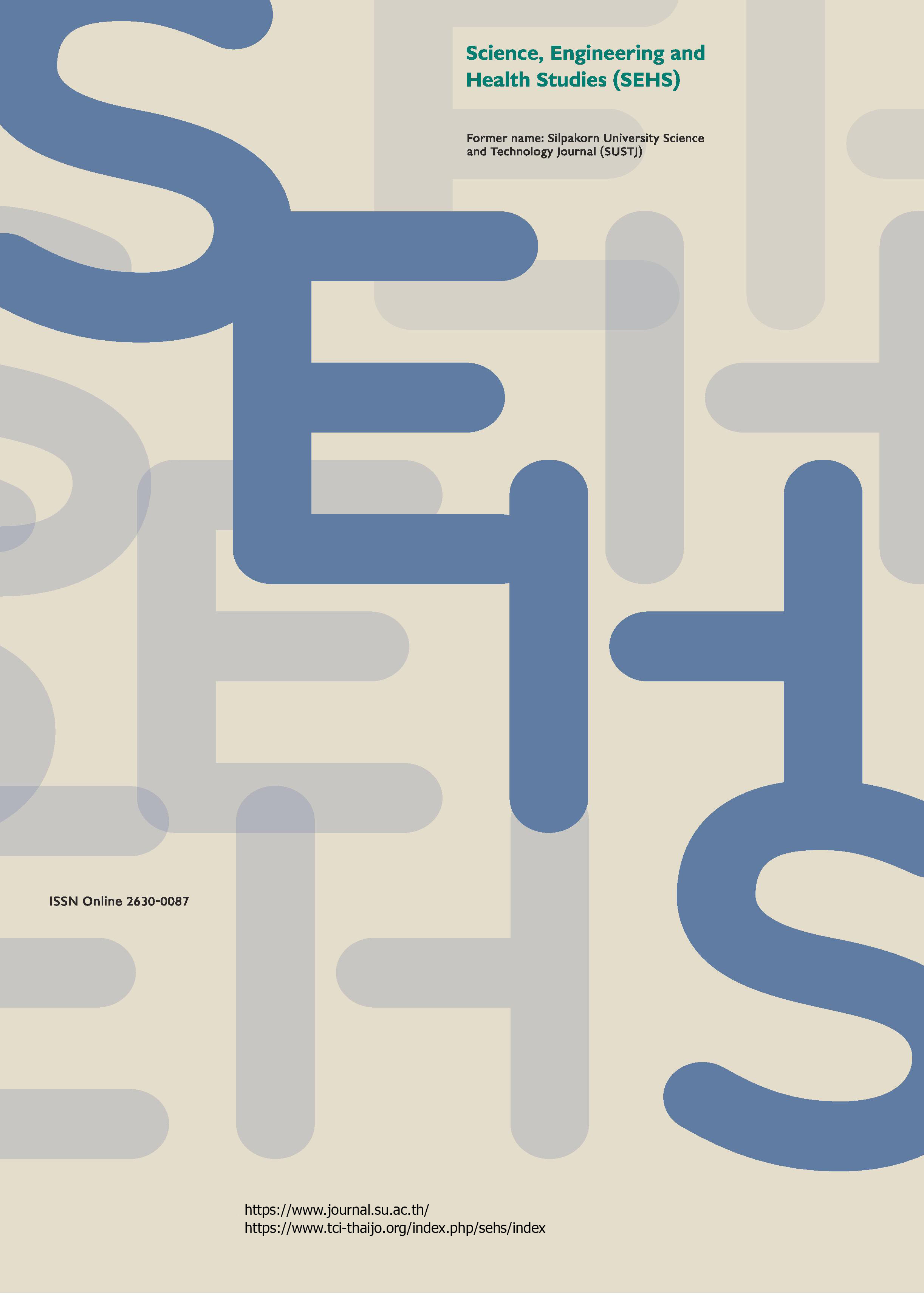Low salinity waterflooding investigation using radioactive tracer in different sand pack configurations
Main Article Content
Abstract
Waterflooding is a simple secondary oil retrieval method practiced worldwide to assist and improve oil recovery. Consequently, understanding the flow behavior of the injected water is essential to ensure an efficient waterflooding process. Nevertheless, literature on utilizing radiotracers to investigate fluid flow behavior in oil reservoirs is limited. The current study observed and compared horizontal and vertical fluid flows in simulated sandstone reservoirs. Low salinity water of 500 ppm sodium chloride solution was injected into vertically and horizontally sand-packed columns at a flow rate of 3.5 mL/min. Subsequently, technetium-99m radioisotopes with a half-life of six hours were injected into the columns as tracers. The residence time distribution for both setups fitted the perfect mixer in the series model. Nonetheless, the calculated sweep efficiency and overall oil recovery percentage were higher for the horizontal than the vertical configuration, demonstrating that gravitational forces affect the flow behavior of fluids in oil reservoirs.
Downloads
Article Details

This work is licensed under a Creative Commons Attribution-NonCommercial-NoDerivatives 4.0 International License.
References
Anjirwala, H. (2017). Critical role of wettability alteration in improved oil recovery by low-salinity water in sandstone rock – A theoretical approach. International Journal for Innovative Research in Science and Technology, 3(11), 134–143.
Attar, A. Z. (2017). Evaluation of the impact of reservoir heterogeneity and mixing on low salinity waterflooding. Doctoral dissertation. Imperial College London, UK.
Aziz, D. A. C., Mohammadian, E., Rosli, N. R., Yusoff, N. H., and Othman, N. (2020). The effect of kaolinite on oil recovery by low salinity waterflooding in sandstone reservoirs. International Journal of Mechanical and Production Engineering Research and Development, 10(3), 15533–15540.
Cheng, Y., Zhang, C., and Zhu, L.-qi. (2017). A fractal irreducible water saturation model for capillary tubes and its application in tight gas reservoir. Journal of Petroleum Science and Engineering, 159, 731–739.
Cobb, W. M., and Marek, F. J. (2003). Determination of volumetric sweep efficiency in mature waterfloods using production data. SPE Reprint Series, 56, 182–190.
Groenenboom, J., Wong, S.-W., Meling, T., Zschuppe, R., and Davidson, B. (2003). Pulsed water injection during waterflooding [Paper presentation]. The SPE International Improved Oil Recovery Conference in Asia Pacific, Kuala Lumpur, Malaysia. October 20–21.
International Atomic Energy Agency (IAEA). (2008). Radiotracer Residence Time Distribution Method for Industrial and Environmental Applications. Vienna: IAEA.
Luo, H., Delshad, M., Pope, G. A., and Mohanty, K. K. (2017). Interactions between viscous fingering and channeling for unstable water/polymer floods in heavy oil reservoirs [Paper presentation]. The SPE Reservoir Simulation Conference 2017, Texas, USA. February 20.
Melo, M. A., and Almeida, A. R. (2017). Determining the sweep efficiency of waterflooding using tracers [Paper presentation]. The SPE Latin America and Caribbean Mature Fields Symposium 2017, Bahia, Brazil. March 15.
Othman, N., Hassan, H., and Aiman, N. S. (2020). RTD modelling using radiotracer technique in porous media for oil recovery study. AIP Conference Proceedings, 2295, 020010.
Othman, N, Wan Kamal, W. H. B., Jasni, N. S., Rosli, N. R., Yahya, R., Yusoff, N. H., Mohd Yunos, M. A. S., Shah Dahing, L. N., Shari, M. R., Hassan, H., Mahmood, A., Terry, A. M., and Abdullah, N. (2021). Residence time distribution (RTD) of water flooding activity in oil recovery using vertical sand column: radiotracer approach. IOP Conference Series: Materials Science and Engineering, 1106, 012031.
Shalabi, E. W. Al., Sepehrnoori, K., and Delshad, M. (2014). Mechanisms behind low salinity water injection in carbonate reservoirs. Fuel, 121, 11–19.
Sun, X., Alhuraishawy, A. K., Bai, B., and Wei, M. (2018). Combining preformed particle gel and low salinity waterflooding to improve conformance control in fractured reservoirs. Fuel, 221, 501–512.
Tang, Y. B., Li, M., Bernabé, Y., and Zhao, J. Z. (2020). Viscous fingering and preferential flow paths in heterogeneous porous media. Journal of Geophysical Research: Solid Earth, 125(3), e2019JB019306.
van der Velden, S., Dietze, M. M. A., Viergever, M. A., and de Jong, H. W. A. M. (2019). Fast technetium-99m liver SPECT for evaluation of the pretreatment procedure for radioembolization dosimetry. Medical Physics, 46(1), 345–355.
Webb, K. J., Black, C. J. J., and Al-Ajeel, H. (2003). Low salinity oil recovery – log-inject-log. In Proceedings of the Middle East Oil Show, pp. 367–374. Sakhir, Bahrain.
Yuan, F. Q., and Li, Z. Q. (2013). An easy calculation method on sweep efficiency of chemical flooding. Applied Mechanics and Materials, 275–277, 496–501.
Zhang, Y., Xie, X., and Morrow, N. R. (2007). Waterflood performance by injection of brine with different salinity for reservoir cores [Paper presentation]. The SPE Annual Technical Conference and Exhibition, Anaheim, California, USA. November 11–14.


